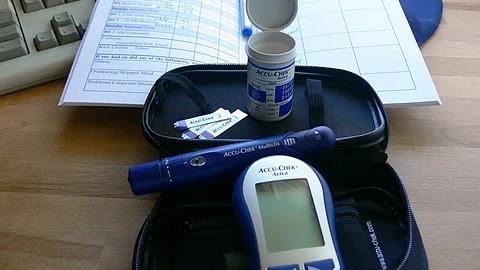

A recent report published in The Lancet on World Diabetes Day 2024 has revealed that India is home to nearly a quarter of the world’s diabetic population. The study, conducted by the NCD Risk Factor Collaboration (NCD-RisC) in partnership with the World Health Organization (WHO), found that of the 828 million adults living with diabetes globally, a staggering 212 million are in India. This makes India the country with the highest number of diabetes cases, followed by China (148 million), the United States (42 million), Pakistan (36 million), Indonesia (25 million), and Brazil (22 million).
Global Diabetes Trends and Diagnostic Methods
The research, based on data up to 2022, represents the first comprehensive global analysis of trends in diabetes rates and treatment. Data from over 140 million individuals aged 18 and above, gathered from more than 1,000 studies, were analyzed using two widely accepted diagnostic criteria: a fasting plasma glucose (FPG) level of 7.0 mmol/L (126 mg/dL) or higher, and an HbA1c level of 6.5% or above.
Dr. R M Anjana, president of the Madras Diabetes Research Foundation and one of the study’s authors, noted that the use of HbA1c and fasting glucose tests as benchmarks may have contributed to the increased prevalence numbers. According to Dr. Anjana, the inclusion of these tests, instead of the more sensitive Oral Glucose Tolerance Test (OGTT) used in a prior ICMR-INDIAB study, led to higher reported diabetes rates. The HbA1c test, while commonly used, can be influenced by factors such as anaemia, blood disorders, and certain medications, thus raising concerns about its reliability as a diagnostic tool for diabetes.
Supporting this view, renowned diabetologist Dr. C S Yajnik referenced his 2012 study that demonstrated how anaemia and iron deficiency could artificially elevate HbA1c levels. This could result in potential misdiagnoses, especially in populations with normal glucose tolerance but prevalent anaemia. Therefore, glucose-based measurements are often preferred in regions where anaemia is common. Without relying on the HbA1c test, the ICMR-INDIAB study reported that diabetes prevalence in India stood at 14.4% among women (69 million) and 12.2% among men (62 million), totaling 131 million individuals in 2022.
Rising Risk Factors and Treatment Gaps
Obesity and poor dietary habits have been identified as major risk factors for diabetes worldwide. Dr. Anjana emphasizes the need for ambitious policies in low-income regions of India to curb the rise in diabetes cases. Strategies could include restricting unhealthy foods, making nutritious foods more affordable, offering healthy school meals, and promoting access to safe walking spaces, public parks, and fitness centers with free admission.
Globally, a significant gap in diabetes treatment was also highlighted. According to the study, three out of five adults aged 30 and above (approximately 445 million people) did not receive medication for diabetes in 2022. This number is more than three times the figure reported in 1990 (129 million). In India alone, nearly 64 million men and 69 million women with diabetes remained untreated last year.
Professor Majid Ezzati from Imperial College London, a senior author of the study, expressed concern over the lack of treatment, particularly in low-income countries. Diabetes tends to affect younger populations in these regions, and without effective management, these individuals face lifelong complications such as heart disease, kidney damage, vision loss, or even amputation. In some cases, untreated diabetes can result in premature death, underscoring the urgent need for improved access to healthcare and medication.
Call for Action in Diabetes Prevention and Management
The findings of this study serve as a wake-up call for policymakers and healthcare providers to take immediate action in addressing the growing diabetes crisis. With India being a significant contributor to global diabetes numbers, there is an urgent need for targeted interventions that focus on both prevention and treatment. Ensuring widespread access to affordable healthcare, promoting healthy lifestyles, and raising awareness about diabetes management could help mitigate the impact of this chronic condition.
References:
1. https://www.thelancet.com/journals/lancet/article/PIIS0140-6736(24)02317-1/fulltext
(Input From Various Sources)
(Rehash/Ankur Deka/MSM)
